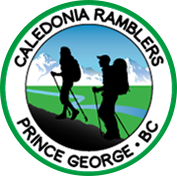“Expect the best, plan for the worst and reality will fall somewhere in between.”
This is so true when it comes to hiking in the mountains. The weather can change from a bright sunny day, to a thunderstorm and hail within 30 minutes. Planning ahead will improve your hiking experience, ensure your safety and the safety of your group, and may possibly save your life. Review the list below to identify the essential items that you should carry with you at all times.
Hiking & Backpacking Checklist
Water. It is vital that you stay hydrated especially on those hot summer days when exercise and excess humidity can cause the human body to lose as much as 4 litres of water (or more, depending on the individual). You should plan to take at a minimum 2 litres of water with you on every hike.
Extra Food. Carrying extra food is crucial. If you are stuck in the wilderness for a few days, or even a few hours, longer than you originally planned, then you will require that additional nourishment.
Extra Clothing. Staying dry and warm is very important. Always bring rain gear (tops and bottoms), and extra layers of clothing appropriate for the hike you are going on. Dress in layers and adjust your clothing according to your activity level. Remember that temperatures at high elevations are much cooler than in the valleys, even on the warmest summer days.
Whistle. A whistle is a much more effective and easier method for calling for help then yelling or shouting. It can be heard over greater distances and takes much less effort if you are injured. Three whistle blasts is the standard signal for distress.
First Aid Kit. Accidents happen. Bring an appropriate sized kit depending on the trip location, group size and length of stay. Before you leave on your excursion, check the contents/dates and replenish items when necessary. It is recommended each hiker should carry bandaids, pain tablets such as Tylenol or Advil, a tensor bandage (4-inch width), moleskin, duct tape, a tiny emergency blanket, a short piece of strong cord; and an Epipen if they think they may need anaphylaxis treatment.
Bear Mace. This is bear country and you never know when you might come across one. Although bear encounters are rare with large groups, it is best to be prepared. Always have the mace on your person where it can be easily reached and ready to use at a moments notice.
Knife. Multipurpose tools like Swiss Army knives or Leathermans come in handy in all sort of occasions. Cutting rope, opening cans, removing splinters, etc. It doesn’t have to be fancy, just functional.
Fire Starter. A fire provides warmth and light if you need to spend the night out in the woods. Being able to start a campfire requires a fire starter of one sort or another. These can be matches, lighters, or flint sticks. To be effective all fire starters should be kept in a dry, water proof container.
Flashlight or Headlamp. A source of light always comes in handy if a hike takes longer than expected. A headlamp is particularly useful as it frees your hands to do other things like holding a map and compass. Make sure to bring along an extra set of batteries.
Compass or GPS. Global positioning systems (GPS) are excellent for navigating your way in and out of the woods, but they can’t always be relied upon as satellite reception can be weak and batteries run out. Therefore, it is advisable that you bring a compass as a backup. Knowing how to use a map and compass is indispensable when technology fails.
Large Orange Garbage Bag. These are great for keeping you and your gear dry during inclement weather. They also serve as effective signaling devices as they are easier to spot from the sky if you are in need of an air rescue.
Insect Repellent. During the summer months (June in particular), hikers share the outdoors with mosquitoes and blackflies. A good insect repellent is a must to avoid turning your hike into an aggravating scratching marathon.
Hiking Boots. A good pair of hiking boots cannot be emphasized enough. Good boots will provide excellent ankle support, great traction, and are durable. Make sure you get properly sized boots for your feet to avoid blisters.
Backpack. What else are you going to carry all the above mentioned items in? The size of backpack is dependent on the length and type of the excursion. Smaller, lighter day packs are appropriate for day hikes, keeping the weight of your load to a minimum. Multi-day treks require larger packs to accommodate the extra items you will be carrying. Regardless of the size of pack, they should all be fitted to your height and weight and be comfortable to wear as they will be on your back for most of each day.
